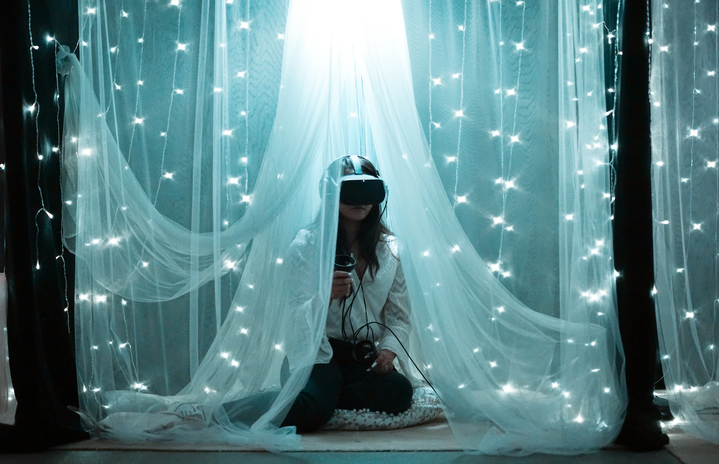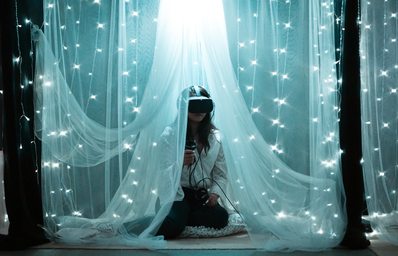In the ever-evolving landscape of social media, a new trend known as “reality shifting” has surged in popularity on TikTok, offering users an intriguing opportunity to step into alternate realities.
This concept has garnered billions of views on the platform, with enthusiasts claiming to transport their consciousness to otherworldly realms.
However, this phenomenon is not without its controversies, as former shifters have come forward to voice their concerns about the potential harm it can cause to one’s mental health.
What is Reality Shifting?
Reality shifting, as it is described by its practitioners, is the act of moving one’s consciousness to another universe. The process involves deep meditation and visualization, wherein individuals craft intricate scripts detailing their ideal existence in a parallel reality known as a Dream Reality (DR).
These scripts can encompass various aspects, such as who they will be, their relationships, and their interactions in this alternate dimension. Popular DRs often include beloved fictional worlds like Hogwarts, a testament to the enduring appeal of the Harry Potter series.
Shifting activities typically revolve around methods like the Raven Method, where individuals lie still, count down from 100, and engage in visualization exercises to “wake up” in their chosen DR. This process is likened to a form of meditation, offering a sense of control and escapism during challenging times.
Some websites, such as WikiHow, offer step-by-step explanations of how to shift. Some steps include finding a safe space, choosing your DR, listing the relationships you wish to have in your DR, repeating affirmations in your head, and more.
Why Is Reality Shifting Appealing?
For many, reality shifting has become a therapeutic escape during stressful periods, such as the ongoing pandemic. Some individuals turned to this practice as an alternative to dealing with depression and, in some cases, even viewed it as a safer option than contemplating suicide.
The allure of crafting a world where they have control and can experience joy, adventure, and companionship is an enticing prospect that many find difficult to resist.
How is Reality Shifting Problematic?
Despite the positive aspects of reality shifting, there is a growing chorus of concern from former shifters who have experienced adverse effects. Some individuals have described the practice as an unhealthy obsession that led them to neglect their real lives and worsen existing mental health issues.
In extreme cases, one former shifter reported becoming delusional about the existence of a soulmate in her DR, further highlighting the potential dangers.
Experts in the field of psychology have voiced concerns as well, stating that prolonged involvement in reality shifting can lead to a detachment from reality or dissociation.
The act of adopting multiple new identities in various DRs could also pose a risk to one’s sense of identity, especially in younger individuals who are still developing their self-concept.
Balancing Escapism and Reality
Reality shifting, for the most part, serves as a form of harmless escapism for those seeking an emotional reprieve from their daily lives. It provides a safe space for individuals to explore their interests and imagination while sharing positive interactions with like-minded people.
However, the detachment from reality and the potentially harmful belief in respawning have raised red flags among experts.
Psychological support could be a valuable resource for those engaging in reality shifting, helping individuals maintain a healthy balance between their Dream Realities and their real lives. The overarching message here is one of caution, urging practitioners to remain connected to the real world while continuing to enjoy their fantastical journeys through alternate dimensions.
The Roots of Reality Shifting on TikTok
The origins of the reality-shifting trend are largely traced back to the Harry Potter fandom, particularly among fans who have developed an affection for the character Draco Malfoy. Imaginative videos that depict life as Draco’s significant other have gained considerable popularity.
TikTok’s role in rekindling interest in the Harry Potter series among a new generation of fans is seen by some as a way to reclaim the franchise following controversial comments made by its author, J.K. Rowling.
While, for many, it provides a healthy form of escapism, there are concerns that excessive involvement in the practice could lead to detrimental effects on one’s mental health and sense of reality.
Experts urge caution and recommend seeking support if shifting causes fear, challenges beliefs about reality, leads to unwanted altered states, or becomes an unhealthy obsession. Balancing the allure of DR with the responsibilities of the real world is the key to maintaining a healthy and fulfilling life.
In the end, reality shifting offers a tantalizing escape, but individuals must tread carefully to ensure they don’t lose touch with the world they inhabit.


